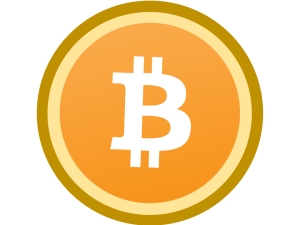Beneath the positive headlines – a record year for startup funding and growing interest from financial incumbents – there’s a sense of unease in the bitcoin industry over the now months-long debate on a proposed change to the protocol that governs what is to date the world’s most widely used and longest-running public blockchain.
The debate will be given renewed life this weekend when some of the industry’s most influential, and most historically elusive, stakeholders gather in Hong Kong for two days of technical discussions as part of the second installment of Scaling Bitcoin, a development conference sponsored by MIT, Blockstream and PriceWaterhouseCoopers, among others.
Attending will be key representatives from bitcoin’s development team, including Blockstream president Adam Back, core developer Jeff Garzik and the lead developers behind the proposedLightning Network, Joseph Poon and Tadge Dryja.
Further, in an industry first, its largest mining pools – BW.com, F2pool, Antpool and BTCC Pool – will gather for a panel in which they will voice their opinions on the controversial issue.
On the heels of an inaugural conference in Montreal this September, it’s safe to say expectations for the event are high and varied.
As bitcoin transaction volumes hit all-time highs, industry observers worry that the bitcoin blockchain will soon be unable to cope and process them in a timely manner.
Today, bitcoin miners product blocks up to the size limit of 1 MB per block, a process that takes place, on average, every ten minutes. With each new block, 25 BTC are added to the network.
Any transactions that would carry the data block over this limit, are then sent to the network’s mempool. There, they wait in a veritable backlog of pending transactions until a miner is willing to accept the fee the sender attached to the transaction and include it another block.
Of course, the debate gains added complexity given that, to increase the 1MB limit, 95% of the many thousands of computers contributing processing power to the network will need to voluntarily switch to a new software update in what’s known as a “hard fork“.
Fears over how stakeholders would react to this scenario have led others to explore solutions for increasing bitcoin’s capacity without adjusting the block size, which will also be discussed at the event.
In remarks, the unease over the debate among the industry’s business community is palpable. Jack Liu, head of international business at Chinese exchange giant OKCoin, readily admits that, when it comes to solutions, “attention spans are waning”.
Elsewhere, Amos Meiri, CEO of blockchain startup Colu, says he expects to see “progress and decisions” at the event, adding:
“If bitcoin will not scale soon we might need to think of alternatives.”
Uneasy truce
The environment amounts to what developer Paul Sztorc called a “looming contradiction” between groups who want to come out of the conference with a solution, and the event’s official stance that no such decision can be expected.
Developer Adam Back, for example, has attempted to unify community members in message board posts in the run-up to the event, evoking the common good and encouraging users not to see those with opposing views as adversaries.
“For bitcoin to scale and improve and be secure it is important for the users, technical community and ecosystem to act in consensus, informed by scientific discourse. Our competition is the inefficiencies in banking/finance ecosystem, not each other,” he wrote.
Scaling Bitcoin organizer Pindar Wong, who serves as a digital strategy advisor to the Hong Kong Government, has also moved to downplay expectations for the event.
“We’re just a platform,” Wong told CoinDesk. “We’re trying to put something together to using an academic and scientific approach of how to scale bitcoin. The communication can lead to collaboration, and we hope that there’s an emergent consensus, but that’s beyond our control.”
To facilitate dialogue, Wong said there will be simultaneous translation of the event into both Chinese and English, as well as three social events in addition to the technical talks. In addition, the event will be streamed on YouTube and Ustream.
As for any next steps after the conference, Wong was less clear, suggesting his focus is for now on the Hong Kong event.
“We hope to have some forward motion on how to scale bitcoin. That’s clearly the design goal. How to do that requires a complex multi-stakeholder view. At the end of [Hong Kong], we’ll be looking at next steps to evaluate whether they’ve been useful from a technical perspective,” he said.
Small gains
Though there is consensus that the bitcoin network needs to be altered, some members of the development community continue to remain unconvinced that increases to the block size are needed.
Should the block size not be increased, they believe a market will develop where users have to pay a fluctuating fee to secure transactions against the blockchain, which could in turn impact bitcoin’s ease of use.
However, these industry participants often cite the need for the bitcoin blockchain to be smaller in total size as an advantage of this, as more individuals or entities would be able to affordably approve transactions and store versions of the ledger. This, in turn, they argue will make the blockchain’s transactions more resistant to censorship by any one party.
“Today that whole blockchain is over 50GB,” Bobby Lee, CEO of bitcoin mining and exchange firm BTCC, explained. “If we dramatically increase the blockchain, most people’s computers won’t even be able to hold the blockchain. This could scale out of hand.”
Nonetheless, as noted by developer Peter Todd, a more rapid increase is favored by businesses that want to provide investors with the confidence they can affordably onboard new customers to their platforms.
“My main prediction is that we’re not going to see a scaling ‘solution’ that’s acceptable to the likes of Coinbase and others hoping to radically increase the blocksize,” Todd told CoinDesk. “Large block promoters such as Gavin Andresen have so far failed to come up with any evidence that their scaling solution is anything but a fairly simple tradeoff of increasing centralization for cheaper transactions.”
To date, BIP 101 has been backed by bitcoin services such as Circle and itBit, while BIP 100 draws most of its support from the mining community. (A full list of which firms are backing which proposals can be found here).
Todd said he expects a “small increase” in block size to be approved at the conference, but noted that any decision is likely to be hard fought.
“You can’t satisfy both demands simultaneously,” he said.
Developer Charlie Lee, creator of alternative cryptocurrency litecoin and director of engineering at Coinbase, countered the notion that the firm has any expectation for the event.
“We’re hoping that the community can come together and come to a consensus on how to move forward because it’s been a very contentious issue, but hopefully we’ll see some good proposals, some good invitations and some numbers that people will run in terms of how the proposals will help with scaling,” he told CoinDesk.
Patient miners
In remarks, members of the attending mining firms seemed less concerned about the outcome of the event, indicating to CoinDesk their interest in participating and learning at the event.
Jake Smith, overseas marketing director at Bitmain, operator of the Antpool mining pool, said his firm is excited to attend as he felt miners were “underrepresented” in Montreal. Perhaps because of this, however, he said he did not expect for a solution to be put forth.
“What I personally hope gets accomplished is that developers and miners can start coming to some form of consensus on just how we can increase bitcoin’s scalability,” he said.
Lee, whose BTCC mining pool controls 14% of the global hashrate at press time, also voiced his belief that miners could come to have the final say on decisions.
One issue among this community over the BIP 101 proposal, Lee said, is that by effectively setting the blocksize increases so far in advance, it prevents future votes from occurring on the issue at a later date.
“It’s also a political debate, should block sizes and future decisions be decided by vote or by the creator of bitcoin, satoshi himself, or a dictator, or should voting be allowed,” Lee said. “We were asked to vote [on BIP 100 and BIP 101] and if we should be allowed to vote.”
Marshall Long, CTO of mining consulting firm FinalHash, reiterated that the mining community is largely in favor of BIP 100. Still, he expected a “combined approach” could be reached soon, with some reservations.
“To be frank culture may be the biggest issue. Not language. Many Westerners just don’t ‘get it’,” he told CoinDesk.
Notable absences
Despite the impressive cast of assembled industry representatives, there will also be notable absentees. Gavin Andresen, bitcoin’s long-time maintainer and one of the community’s oldest and most visible developers, has said he will not be traveling to Hong Kong.
Also absent will be developer and new R3 employee Mike Hearn, who together with Andresen backed the controversial proposal Bitcoin XT this summer. Introduced as Bitcoin Improvement Proposal (BIP) 101, Bitcoin XT aims to raise the block size limit to 8MB, which will increase an additional 40% every two years until 2036.
Though similar in intent to other proposals, Bitcoin XT differed in that Hearn and Andresen had actively sought to encourage node operators and miners to switch to the client, effectively encouraging stakeholders to vote on a preferred proposal.
In statements, Andresen expressed his hope that the industry will come to a consensus on how to best proceed without him, though in prior remarks he has said he expects the debate to carry on past this weekend’s event.
“I hope the Hong Kong meeting is very productive and the developers who attend reach consensus on how quickly to increase the maximum block size,” he told CoinDesk.
CoinDesk will be covering Scaling Bitcoin live from Hong Kong on 6th and 7th December.
Source : http://www.coindesk.com/expectations-high-ahead-of-blocksize-debate-at-scaling-bitcoin-hong-kong/
Click on the bitcoin logo below to buy, use or accept bitcoin. Unocoin is India’s most popular bitcoin wallet.
To read the bitcoin white paper, visit: https://bitcoin.org/bitcoin.pdf








